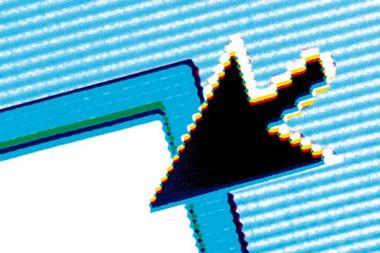Olympics, online advertisements and Web 2.0 threats top hacker’s to-do lists
Content-based threats top the list of security predictions for 2008.
Specifically, the research expects:
The Olympics will spur a flurry of hacker activity such as compromises of popular Olympic news or other sports sites.
Hackers will leverage the increased adoption of Macs and iPhones as new means for cross-platform Web attacks.
Special interest groups that fall within a certain age group, wealth bracket, or people with particular purchasing habits, will become targets of Web 2.0 attacks.
Spam will increase in the blogosphere and ‘talk back’ sections of news sites to drive traffic and increase search engine rankings of infected Web sites.
Dan Hubbard, vice president of security research at Websense, which conducted the research, said: ‘Looking at the current attack trends, cyber criminal techniques are evolving quickly and efficiently to not only evade detection, but to steal data and manipulate trusted content such as Web sites and applications. It’s critical that organizations and individuals recognize that attackers are changing techniques and launching targeted attacks.’
Websense 2008 security threat predictions
1. Olympics
New cyber attacks, phishing and fraud Event-based attacks and scams are popular, and with the whole world watching, the 2008 Olympics may fuel a surge in cyberattacks. As the Olympic torch burns, the researchers predict the possibility of large scale denial-of-service (DoS) attacks on Beijing Olympic-related sites as political statements and fraud attempts through email and the web surrounding the Olympics. Additionally, the report predicts compromises of popular Olympic news or other sports sites attacks designed to install malicious code on end-users machines and steal personal or confidential business information.
2. Malicious SPAM will invade blogs, search engines, forums and web sites
The report predicts that hackers will increasingly use web spam to post URLs to malicious sites within forums, blogs, in the commentary or 'talk-back' sections of news sites and on compromised web sites. This activity not only drives traffic to the infected Web sites but also assists in the purveyor's site sitting higher on search engine rankings, increasing the risk that users will visit the site.
3. Attackers use web's weakest links to launch attacks
The web is an entanglement of links and content. The advent of Web 2.0 additions such as Google Adsense, mash-ups, widgets, and social networks along with the massive amounts of web advertisements linked to web pages have increased the likelihood of 'weak links' or web sites and content that are vulnerable to compromises. The researchers predict that attackers will increasingly exploit the weakest links within the web infrastructure in order to target the greatest number of internet users. Most vulnerable to these attacks are search engines and large user networks such as MySpace, Facebook or other social networking sites.
4. Number of compromised web sites will surpass number of created malicious sites
The web as an attack vector has been steadily increasing for the last five years and now attackers are using compromised sites as their launching platforms even more than their own created sites. Compromising sites particularly, sites well-visited by end-users, such as the Dolphin Stadium attack that occurred a few days prior to the 2007 Super Bowl XLI in Miami., provides attackers with built-in web traffic and minimizes the need for lures through email, instant messaging or web posts.
5. Cross-platform web attacks - Mac, iPhone popularity spurs increase
With the brand popularity and growing use of iPhones and Macintosh computers, the researchers predict attackers will increasingly launch cross-platform web attacks that detect the operating system in use and serve up code specifically targeting that operating system instead of attacks based on just the web browser. Operating systems that are targeted now include Mac OSX, iPhone, and Windows.
6. Rise in targeted Web 2.0 special interest attacks
Hackers targeting specific groups of people based on interests and profile Web 2.0 has spawned a proliferation of web users that visit chat rooms, social networking sites, and special interest Web sites such as travel sites, automotive, and more. These sites provide attackers with potential victims that fall within a certain age group, wealth bracket, or people with particular purchasing habits. In 2008, the researchers predict targeted attacks will rise toward specific social networking or special interest sites that have a higher probability of delivering a payoff.
7. Morphing JavaScript to evade anti-virus scanners
Hackers are upping the ante with evasion techniques that use poly-morphic JavaScript (Polyscript) which means that a uniquely-coded web page is served up for each visit by a user to a malicious web site. By changing the code every visit, signature-based security scanning technologies have difficulty detecting web pages as malicious and hackers can extend the length of time their malicious site evades detection.
8. Data concealment methods increase in sophistication
The report predicts an increased use of crypto-virology and sophistication in data concealment including the use of stenography, embedding data within standard protocols, and potentially within media files. Toolkits widely available on the web will be used to embed proprietary information and steal data.
9. Global law enforcement will crack down on key hacker groups and individuals
In 2007, large-scale Internet-based attacks garnered the attention of law enforcement officials around the world. The report anticipates that through the global cooperation of enforcement agencies, in 2008 the biggest crackdown and arrests of key members of a hacker group will occur.
10. Vishing and voice spam will combine and increase
The vast cell phone user population has grown into a lucrative market to exploit with spamming and vishing for financial gain. To date, researchers have seen an increased number of vishing attacks but not a lot of spam or pro-active automated calling. In 2008 the report predicts that vishing, or the practice of using social engineering and Voice over IP (VoIP) to gain personal and financial information and voice spam will combine and increase users will receive automated voice calls on LAN lines with voice spam to lure them to input their credentials through the telephone.



















No comments yet